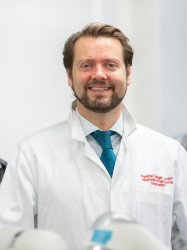BibTex format
@article{Schlueter-Brust:2021:10.3390/jpm11080777,
author = {Schlueter-Brust, K and Henckel, J and Katinakis, F and Buken, C and Opt-Eynde, J and Pofahl, T and Rodriguez, y Baena F and Tatti, F},
doi = {10.3390/jpm11080777},
journal = {Journal of Personalized Medicine},
pages = {1--8},
title = {Augmented-reality-assisted K-wire placement for glenoid component positioning in reversed shoulder arthroplasty: a proof-of-concept study},
url = {http://dx.doi.org/10.3390/jpm11080777},
volume = {11},
year = {2021}
}

